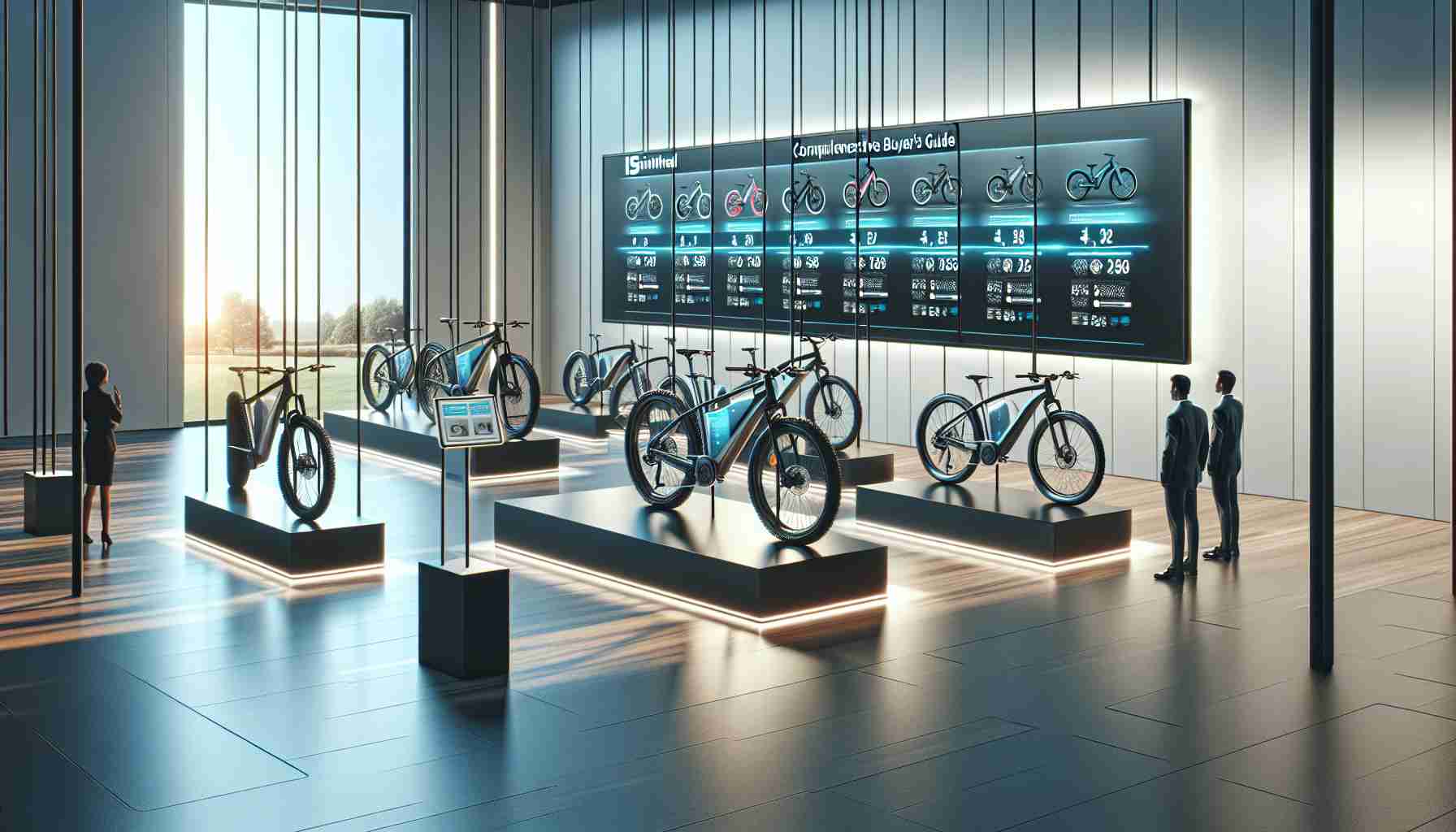Choosing the perfect e-bike can be a daunting task, especially with the plethora of impressive models available on the market. To help you make an informed decision, we’ve put together this comprehensive buyer’s guide based on our extensive testing and hands-on experience with various Isinwheel e-bikes. In this guide, we’ll explore the key factors to consider when selecting an Isinwheel e-bike, ensuring that you find the perfect model to suit your needs and preferences.
Motor Power and Performance
One of the most crucial aspects to consider when choosing an Isinwheel e-bike is its motor power. Isinwheel offers models with motors ranging from 350W to 500W, each providing different levels of performance and assistance. It’s essential to consider your riding style, the terrain you’ll be tackling, and your desired level of support when deciding on the appropriate motor power.
If you’re primarily riding on flat, paved surfaces and don’t require excessive speed or acceleration, a 350W motor should suffice. These motors provide a smooth and efficient ride, offering ample assistance for casual rides and daily commutes. However, if you plan on tackling steeper inclines or desire a more thrilling riding experience, consider opting for a higher-powered motor, such as the 500W options found in the Isinwheel U5, U7, or M10. These powerful motors deliver stronger acceleration and better hill-climbing ability, making them ideal for adventurous riders who crave a more exhilarating experience.
Battery Capacity and Range
Another critical factor to consider is the battery capacity and range. Isinwheel e-bikes come equipped with high-quality lithium-ion batteries, ranging from 36V to 48V. The battery capacity directly impacts the range of your e-bike, determining how far you can travel on a single charge.
If you plan on using your e-bike for shorter commutes or leisurely rides, a battery capacity of around 36V, like the one found in the Isinwheel U1 or M10, should provide a range of up to 25-43 miles, depending on factors such as rider weight, terrain, and assist level. This range is more than sufficient for most daily rides and casual adventures.
For riders who desire an extended range, consider models with higher-capacity batteries, such as the 48V options found in the Isinwheel U5 or U7. These models offer an impressive range of up to 35-55 miles, making them perfect for longer rides and commutes.
Portability and Foldability
Isinwheel e-bikes excel in portability and foldability, making them ideal for riders who value convenience and easy storage. Models like the Isinwheel U5 and U1 feature foldable designs that allow you to easily store the bike in the trunk of a car, bring it on public transportation, or keep it in your apartment without taking up too much space.
The foldable e-bikes from Isinwheel offer the perfect balance of performance and portability, making them ideal for riders with limited storage space or those who frequently combine cycling with other modes of transportation. The Isinwheel U1, in particular, boasts an ultra-compact folded size of less than 0.15m³, making it one of the most portable e-bikes on the market. Its foldable handlebars, pedals, and height-adjustable seat ensure that you can customize the bike to your preferred riding position while still maintaining a small footprint when folded.
Safety Features and Certifications
When it comes to electric bikes, safety should always be a top priority. Isinwheel understands this and has gone above and beyond to ensure that their e-bikes meet the highest safety standards. All Isinwheel e-bikes have been rigorously tested and certified by SGS, a globally recognized testing and certification company.
Look for models that comply with UL 2849, which sets strict standards for the safety and performance of electric bikes. This certification ensures that the e-bike has undergone extensive testing and meets the necessary requirements for safe operation, reducing the risk of accidents or malfunctions. Additionally, some models, like the Isinwheel M10, also comply with UL 2271, which specifically covers the safety and performance of lithium-ion batteries used in e-bikes.
Additional Features and Accessories
Isinwheel e-bikes come with a range of additional features and accessories that enhance functionality, convenience, and overall riding experience. When choosing your ideal Isinwheel e-bike, consider the features that matter most to you and your riding style.
Most Isinwheel models come equipped with LCD displays that provide essential information such as speed, battery level, pedal assist level, and odometer. These displays keep you informed about your ride metrics and allow you to customize your settings on the go. Some models, like the Isinwheel U7, even feature front and rear racks, allowing you to carry groceries or other cargo with ease.
In conclusion, choosing the right Isinwheel e-bike requires careful consideration of factors such as motor power, battery capacity, portability, safety features, and additional accessories. By taking the time to assess your needs and preferences, you’ll be able to find the perfect Isinwheel e-bike that provides a comfortable, efficient, and enjoyable riding experience. Happy cycling!
The e-bike industry has seen significant growth in recent years, driven by factors such as increasing environmental awareness, rising fuel costs, and the desire for alternative modes of transportation. E-bikes, also known as electric bikes, incorporate a battery-powered motor to assist with pedaling, providing riders with a boost in speed and ease of travel. These bikes are particularly popular among urban commuters, leisure riders, and those looking for a more eco-friendly option.
According to Market Research Future, the global e-bike market is projected to reach a value of over $21 billion by 2025, with a compound annual growth rate (CAGR) of 7.02% during the forecast period of 2019-2025. This growth can be attributed to several factors, including advancements in battery technology, increased government support and incentives for e-bike adoption, and the ongoing trend towards a more sustainable transportation system.
However, the e-bike industry also faces challenges. One key issue is the lack of standardized regulations and classifications for e-bikes in different regions, which can create confusion among consumers and regulators. Additionally, the high initial cost of e-bikes compared to traditional bicycles can be a barrier to adoption for some potential customers. However, as technology improves and production costs decrease, it is expected that e-bikes will become more affordable and accessible to a wider range of consumers.
Market Forecasts
The e-bike market is expected to continue its growth trajectory in the coming years. Market Research Future predicts that the Asia Pacific region will dominate the global e-bike market, in terms of both production and consumption, due to the presence of key manufacturers and a large population of urban commuters. North America and Europe are also expected to witness substantial growth, driven by increasing environmental consciousness and government initiatives promoting sustainable transportation.
Some key trends shaping the e-bike market include the integration of smart technology and connectivity features, the development of lightweight and compact designs, and the introduction of more powerful and efficient motors. Additionally, the growth of the e-commerce sector has made it easier for consumers to research and purchase e-bikes online, contributing to the market’s expansion.
Issues Related to the Industry or Product
While e-bikes offer numerous benefits, there are several issues related to the industry or product that need to be addressed. One significant concern is the need for infrastructure and regulations that cater specifically to e-bikes. This includes the development of designated bike lanes, charging stations, and policies governing e-bike usage on roads and trails. These measures can help ensure the safety of e-bike riders and promote the integration of e-bikes into existing transportation systems.
Another issue is the disposal and recycling of e-bike batteries. As e-bike adoption increases, proper handling and recycling of lithium-ion batteries become essential to minimize environmental impact. Manufacturers and regulatory bodies should work together to establish efficient and environmentally friendly processes for recycling e-bike batteries.
Finally, consumer education is crucial in addressing misconceptions and promoting responsible e-bike use. Many potential riders may have concerns about factors such as battery life, maintenance, and the extra weight of e-bikes. Providing accurate information and resources to educate consumers about the benefits and challenges of e-bikes can help dispel any misconceptions and encourage wider adoption.
Related Links:
– Isinwheel
– Market Research Future







